- Peperomia Serpens: How Easy It Is To Care For It? - September 24, 2021
- Best Indoor Fiberglass Planters Guide: Our Top Picks - September 6, 2021
- Peperomia Polybotrya: Is It Easy To Keep This Plant Alive? - August 31, 2021
I don’t know about you, but I want plants that are beautiful, easy to care for, and difficult to kill. And if you’ve ever had a fussy plant and a diva, you’d appreciate something like pearls and jade pothos. These plants are a breeze to keep alive. They’re so forgiving of you for not giving them the ideal growing conditions that they like. They can even be slightly neglected. They don’t really ask for much.
What are the things that pearls and jade pothos needs? How can you get this easygoing plant growing in your home? Read on and discover everything you need to know about the pearls and jade pothos.
How to Identify Pearls and Jade Pothos
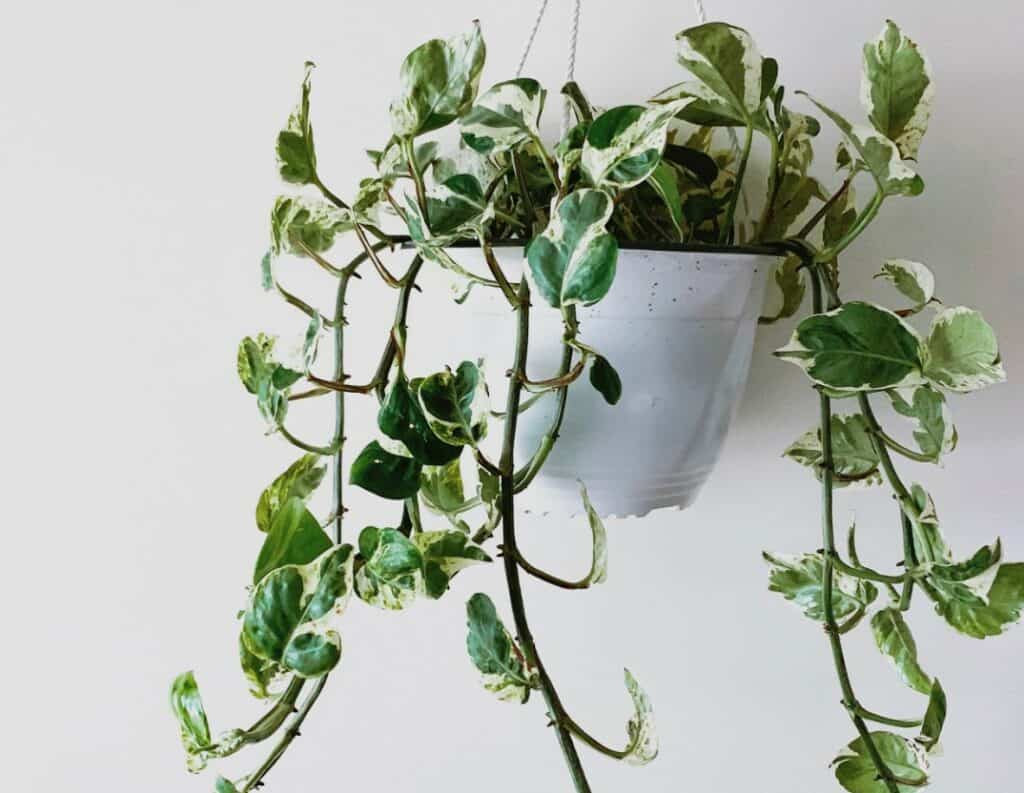
Pearls and jade pothos are a part of the Epipremnum aureum species. It comes from the Araceae family. It’s a climbing vine, but the plants tend to be quite small.
According to the University of Florida Institute of Food and Agricultural Sciences, the mature leaves of pearls and jade pothos can be 1.5 to 2.0 inches (four to five centimeters) wide and 2.5 to 3.0 inches (seven to eight centimeters) long. That’s quite small considering that its mother plant, the marble queen pothos, has leaves with dimensions of up to 4.5 by 3.0 inches (12 by eight centimeters).
The pearls and jade pothos have leaves with gray, green, and white coloration. These variegation are presented in random blotches, streaks, and patches.
Even the sizes of the coloration are irregular. Some variegation is less than a millimeter, while sometimes blotches can span more than half the surface of the leaf.
Compared with N’ Joy Pothos
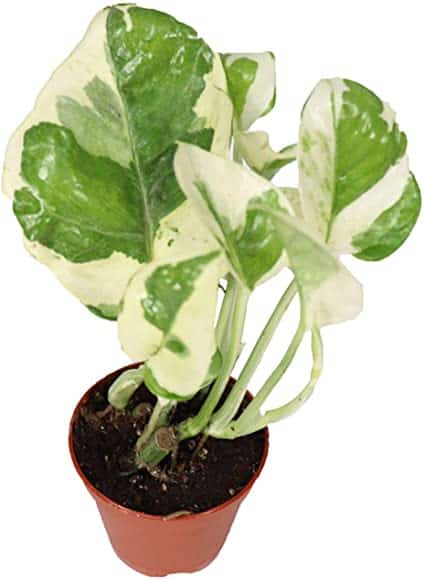
Pearls and jade pothos are often confused with N’ Joy pothos because of the similarities between these two. Both have white and green leaves, and they have marble queen pothos as their parent plant. However, pearls and jade pothos do not have clearly defined white and green areas of N’ Joy. The green parts of pearls and jade pothos have white speckles, and the white parts have green speckles.
Where Does Pearls and Jade Pothos Grow
The pearls and jade pothos were developed by the University of Florida Institute of Food and Agricultural Sciences. They forced mutations in marble queen pothos to create the new cultivar.
Meanwhile, the Epipremnum aureum as a species is native to French Polynesia, Australia, and most parts of Asia. They can typically be found in tropical forests or subtropical forests.
However, you can grow it as a houseplant regardless of where you live.
Uses of Pearls and Jade Pothos
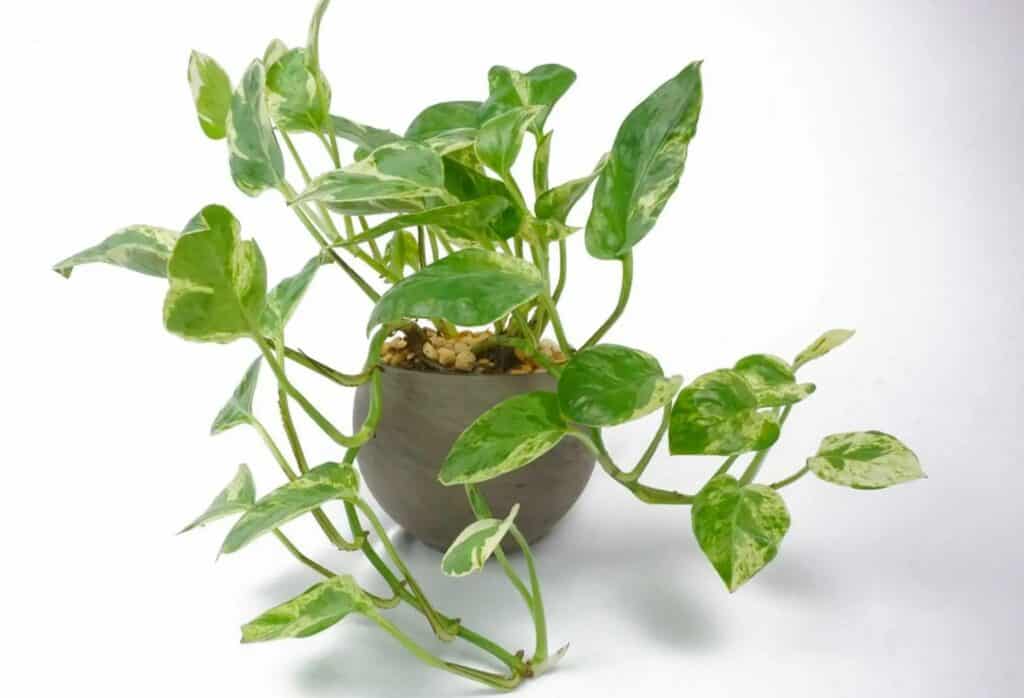
Pearls and jade pothos make great houseplants. They are a breeze to grow and have a reputation for being impossible to kill. Keep them in pots, as they are known to be very invasive as well.
The attractive colors of pearls and jade pothos can easily liven up your living room. Meanwhile, when placed outside, they can take up the fully shaded areas of your yard, perhaps having their homes near trees where other plants cannot live healthily.
How to Grow Pearls and Jade Pothos from Seed
One characteristic of the Epipremnum aureum is that it rarely flowers, even in its native habitat. And it’s not your fault at all that they don’t bloom. Instead, it’s because these species have a genetic deficiency that prevents them from flowering no matter where or how they grow. The lack of gibberellin makes the plant “shy-flowering.”
But there are types of Epipremnum aureum that can be induced to flower by treating it with gibberellin. However, that process in itself is very difficult to perform.
Propagating Pearls and Jade Pothos
But while seeds are rare and difficult to come by, you can still propagate pearls and jade pothos easily. All you need is to cut off a piece of healthy stem at around four to six inches (10 to 15 centimeters) long. You should ensure that each cutting has at least four leaves.
Removing the leaves nearest to the cut end, you can put the stem in water and wait for it to root. An old jar or glass with water will do the trick. Put these cutting in a place that gets a lot of bright light but avoid putting it under direct sunlight.
It should take around four weeks or so to see the roots sprouting from the cut end of the stem. We recommend planting the cuttings in the soil as soon as the roots emerge. You can delay the transplanting, but it would mean that your newly propagated pothos will have a more challenging time adjusting to the soil.
Alternatively, you can also put the cuttings directly into the soil. We recommend a mixture of peat moss and perlite. Make sure that the potting mix covers the first set of nodes and keeps it moist.
Pearls and Jade Pothos Growing Conditions
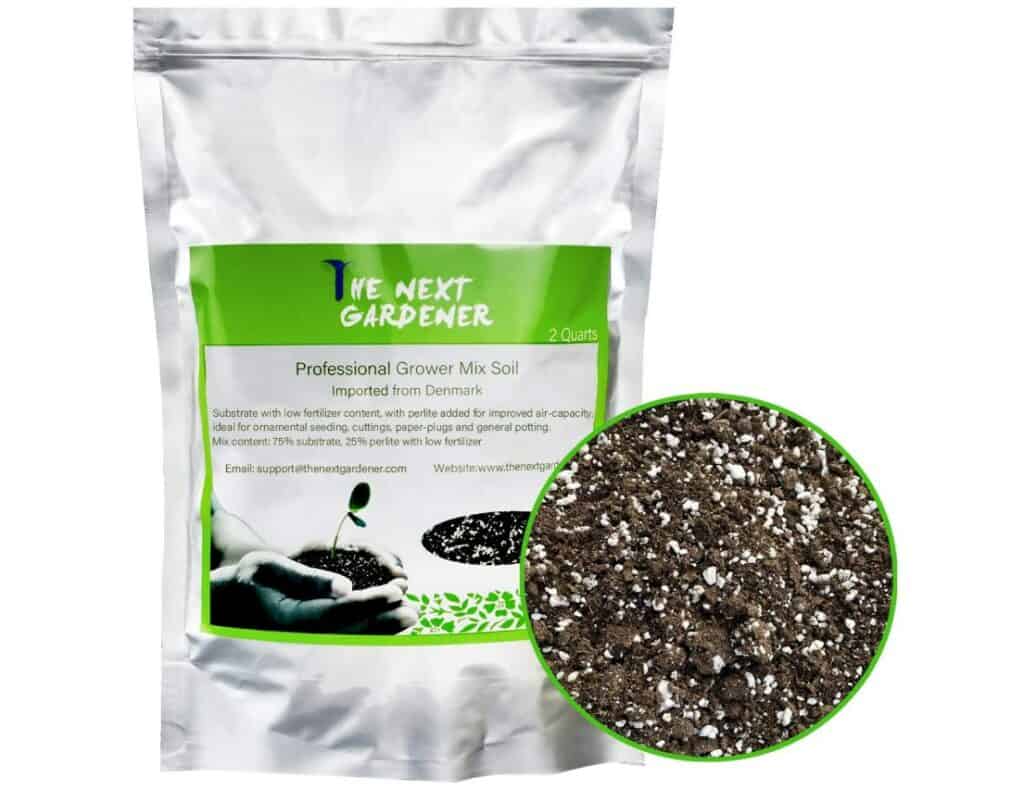
One thing about pearls and jade pothos is that they are as visually stunning as they are forgiving. The green, gray, and white variegation and the trailing growth have made them a wonderful addition to your garden or living room.
Most people, even beginners, will find it easy to grow these plants. They thrive in any kind of light. You can put them under the bright but indirect sun and get more white coloration in the leaves. Or you can put them in darker corners of the room where no other plant can survive. They’d still be very healthy in these corners.
Water only when necessary. You can also opt to fertilize these plants.
What kind of soil do you need? When it comes to growing media, pearls and jade pothos can adapt to just about anything. But if you want to give it the best type of soil, avoid your typical garden soil and opt for something loosely compacted.
Generally, commercially available potting mixes are an excellent growing medium for these plants. You can check out:
- The Next Gardener Professional Grower Mix Soil
- Miracle-Gro Houseplant Potting Mix
- Rio Hamza Trading Devils Ivy Plant Planting Soil
Pearls and Jade Pothos Water Requirements
Pearls and jade pothos do not need frequent watering. In fact, you only need to bring out the watering can when the topsoil is dried out.
Ensure that the potting mix is slightly moist to keep your plant healthy. But if in doubt, it’s better to underwater your pothos than to overwater them as too much moisture might mean root rot.
Pearls and Jade Pothos Sun Requirements
Pearls and jade pothos can thrive best in partial sun. When it gets bright but indirect light, you can find the most beautiful variegation showing up on the leaves. Putting it under direct sunlight can scorch the leaves or even lessen the marbling of the leaves. Be mindful of the amount of direct sunlight your plant gets, as it can literally kill them.
If you’re growing these plants indoors, you’re in luck. You can probably place it just about anywhere, and it will survive. You can put it near an eastern or northern window. Or, if you only have space close to the western or southern window, you will need to place the pots a few ways off these windows.
If you found the perfect place for it, but you see that it’s getting too much sunlight, you can just add a curtain sheer to help lessen the intensity of the sun’s rays. You can also put it away from windows, just as long as the area has fluorescent lights to help the plant stay healthy.
Best Pearls and Jade Pothos Fertilizer
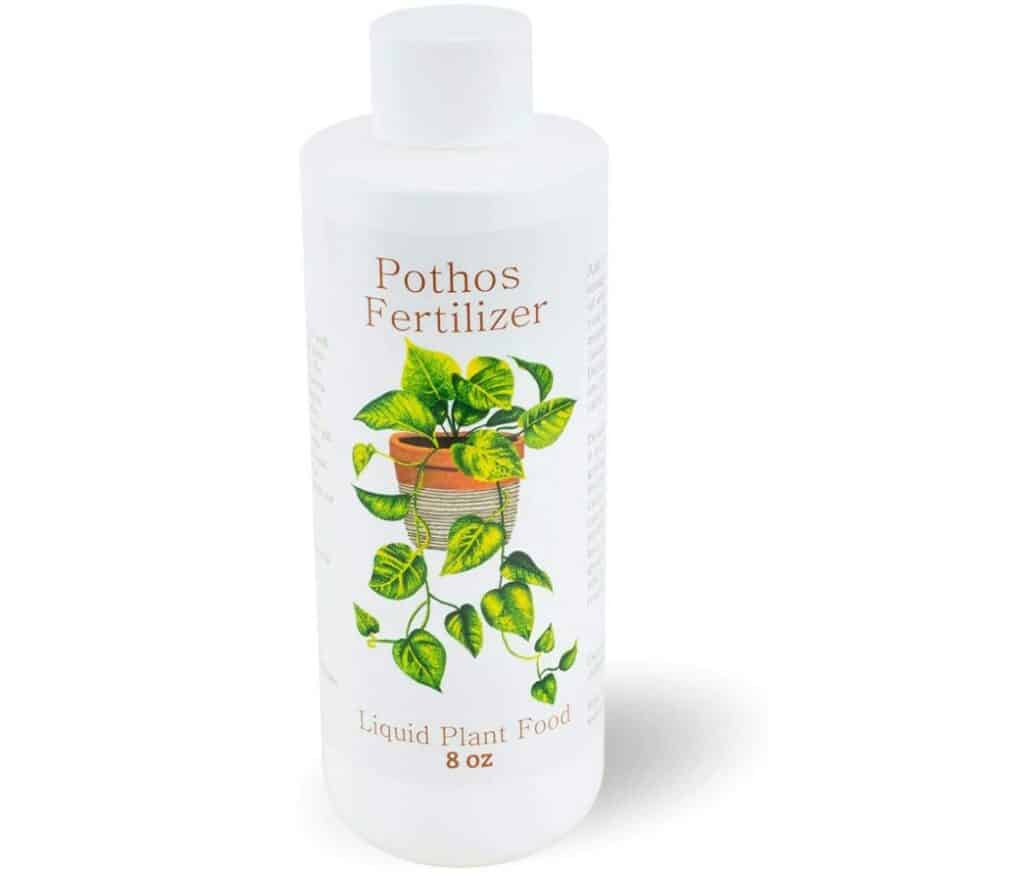
Your pearls and jade pothos are not a voracious feeder. You really do not have to fertilize these plants as frequently as you would with other houseplants.
If you have a newly planted pothos with a new potting mix, you probably don’t have to fertilize your plant until the nutrients are used up. What’s more, you have products like the Pothos Fertilizer: Liquid Fertilizer for Epipremnum Aureum to take the guesswork out of your feeding duties.
But if you don’t want to buy a special fertilizer for your pearls and jade pothos, you can use balanced fertilizers that are formulated for houseplants, such as:
You should only fertilize your pearls and jade pothos when it’s actively growing during spring through summer. Cut back on the feeding when it gets colder.
Best Pearls and Jade Pothos Companion Plantings
Some plants can make your pearls and jade pothos stand out more. Choose plants with more or less the same care requirements as your pothos, such as loose soil or bright indirect light but can tolerate darker spots inside your house.
Syngonium
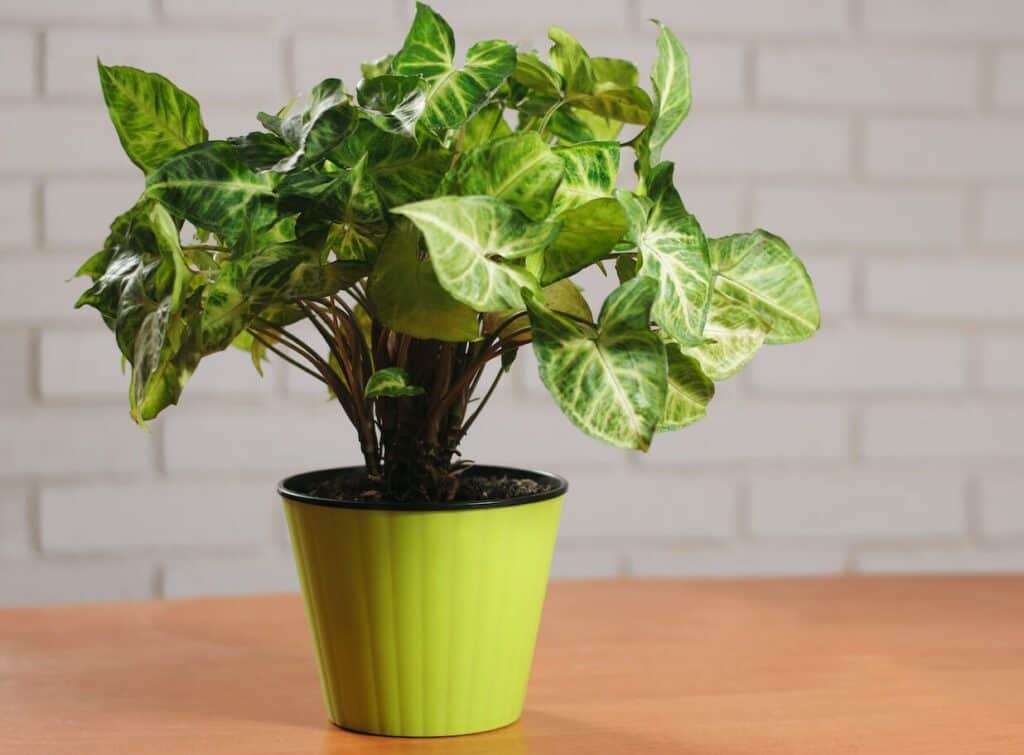
Also known as the arrowhead plant, Syngonium is a climbing vine that likes low light conditions. So if you have lonely pearls and jade pothos growing in a darker corner, you can get the arrowhead plant to keep it company. What’s more, the arrowhead plant has different patterns and colors, so you can choose one that you think will match the marbling patterns of your pearls and jade pothos.
Dieffenbachia
Like the pearls and jade pothos, a dieffenbachia can survive low light conditions but prefers bright and indirect sunlight. It has the same care requirements as your pothos. But what makes these a good companion plant is that it has broad leaves that can contrast nicely to the smaller leaves of the pearls and jade pothos.
What’s more, if your pothos has a green, gray, and white marbled look, the dieffenbachia has a more organized pattern.
Ponytail Palm Tree
With curly leaves growing out of the bulb-shaped trunk, the ponytail palm tree can stand out on its own. But pair it with your pearls and jade pothos, and these plants can sure start conversations and turn heads.
The ponytail palm tree can be placed anywhere, but it likes bright places. You might need to put this outside during the summer, and that may be a problem for your pearls and jade pothos. But because of its curly leaves branching wide, your pothos will be safe underneath.
Others
You can also try pairing your pearls and jade pothos with the following:
- Snake plants: Equally difficult to kill except when it comes to overwatering or underwatering, these snake plants, with their broad and hard leaves, provide a good backdrop for your pothos.
- Asparagus fern: If you’re growing your pearls and jade pothos in a hanging basket, you can choose to pair it with the asparagus fern. Bonus points because these plants have radically different looks from each other.
Pearls and Jade Pothos Diseases and Common Problems
One of the most common problems with your pearls and jade pothos is that the leaves’ growth is stunted when the plant doesn’t get its ideal conditions. For instance, when it gets too little water.
But too much watering can also cause problems such as root rot. And then you have the insects. You might be glad to hear that your pearls and jade pothos are not prone to get attacked by pests. This is especially true if your pothos gets the best conditions and are very healthy.
But sometimes, some insects do attack your pothos, including:
- Aphids
- Mealybugs
- Scales
- Spider mites
- Thrips
These insects can damage your plants by sucking the sap and leaving the leaves or stems weak and yellowing.
Pearls and Jade Pothos Treatments and Maintenance
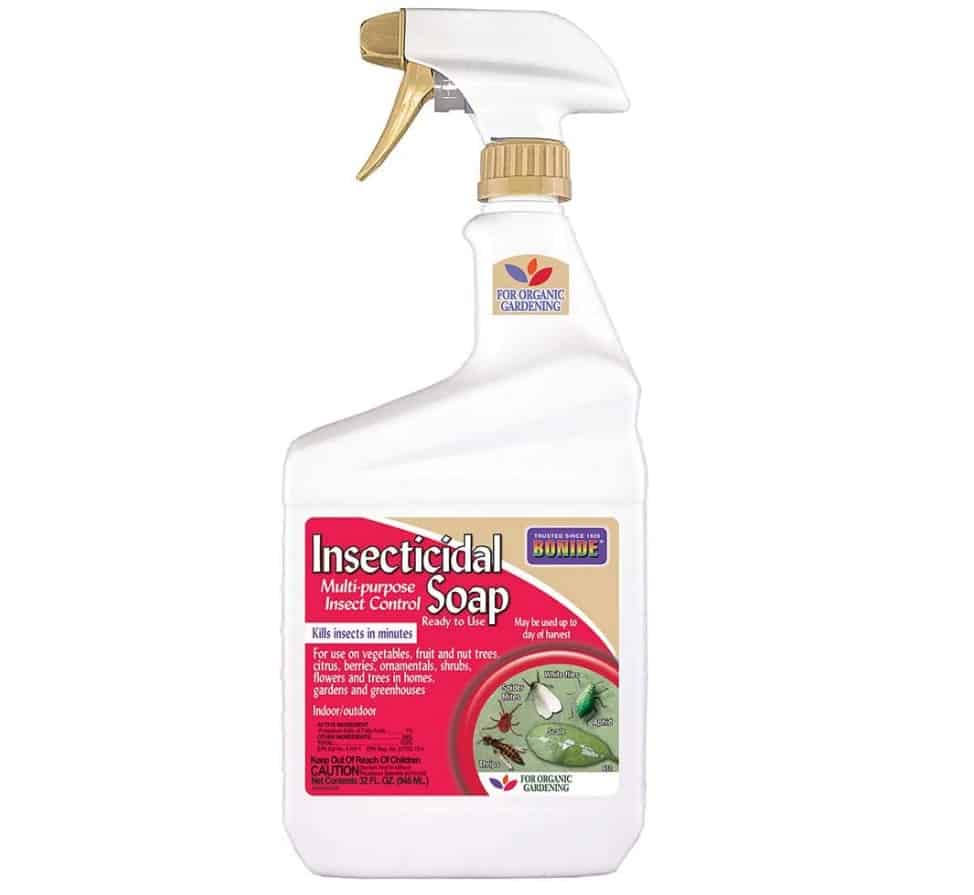
If you’re dealing with insects, you can prune the damaged portions of your plant or throw away the entire thing. You can even remove these insects individually if you can. But if the infestations are too much, you can rely on chemical insecticides to do the job. But if you’re not comfortable with the harmful chemicals, you can try using insecticidal soaps, such as:
- Natria 706230A Insecticidal Soap Organic Miticide
- Bonide Products INC 912102 652 Ready-to-Use Insect Soap
- Garden Safe Brand Insecticidal Soap Insect Killer
Pruning
Pruning is a good way to make sure that your pearls and jade pothos aren’t going to get unruly. It’s also necessary if you want your plant to grow thicker and branch out.
The good news is that you can prune it within two inches (five centimeters) from the ground or soil line. Make sure that you cut around 0.25 inches (6.25 millimeters) from the nodes.
Pearls and Jade Pothos Repotting Instructions
Your pearls and jade pothos take their time to grow, which is good news if you don’t like having to repot your plants every so often. But even if it doesn’t grow too much, you might want to give it a fresh potting mix every one to two years just to make sure that it gets the nutrients it needs to stay healthy.
Repot your pothos in a pot that is one size larger. Giving it too much soil in a bigger container can make it prone to root rot.
Where to Buy Pearls and Jade Pothos Plants Online
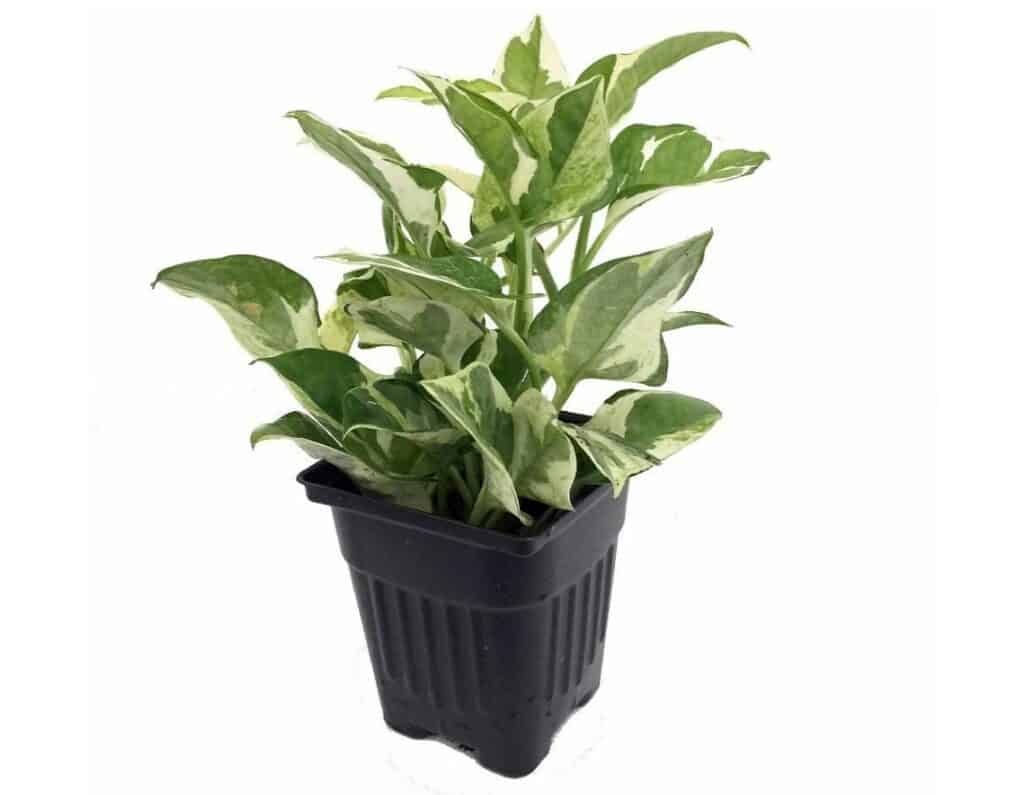
Because of its popularity, pearls and jade pothos are sold just about everywhere. You can rely on online retailers to get this plant for your living room or garden. Woodies Garden Goods have a live plant that it sells for less than $30, and you can add everything that you need to grow it healthily, such as potting mix, fertilizer, or plant food together with your order.
Amazon also has some sellers that give you the chance to grow pearls and jade pothos at home. Etsy also has plants and cuttings for you. The online counterparts of big-box retailers also carry this popular plant. Walmart, for one, sells these plants in four-inch (10.2 centimeters) pots.
Even smaller retailers such as Gabriella Plants and the Spokane Plant Farm offer their selections of pearls and jade pothos.
Research Citations
- Gardening KnowHow: Care Instructions For Ponytail Palm – Tips For Growing Ponytail Palms
- Greenery Unlimited: DIEFFENBACHIA CARE
- Planterina: Syngonium Care
- Planty Dropper: Epipremnum aureum ‘Pearls and Jade (Pearls and Jade Pothos)
- Scientific Reports: Gibberellin deficiency is responsible for shy-flowering nature of Epipremnum aureum
- University of Florida IFAS Extension: New Florida Foliage Plant Cultivar: Pothos ‘Pearls and
FAQs
Question: Can You Grow Pearls and Jade Pothos in Water?
Answer: You can easily grow pearls and jade pothos in water. You only need a jar, tap water, and liquid fertilizer.
Choose a healthy stem with three or four nodes and cut with a sterile blade. Then clear away the leaves nearest the cut part of the stem.
Your pothos mustn’t have any leaves sitting underwater because they will rot. Once you have all the cuttings in the jar, add a few drops of liquid fertilizer.
You should plan on changing out the water every two or three weeks. Or at least until the water becomes brackish.
Question: The Leaves On My Pearls and Jade Pothos Are Yellowing. Why Does This Happen?
Answer: Remember when we said that you should err on the side of underwatering rather than give your pearls and jade pothos too much moisture? That didn’t mean that you should just neglect your plant for weeks and keeping it dry.
If you leave it drier than optimal for your plant, the roots will be stressed because they have to work harder to get moisture from the growing medium. This can result in the leaves of your pothos yellowing with some brown spots.
Question: Can I Change The Variegation Of My Pearls And Jade Pothos?
Answer: If you want the white and gray blotches and speckles to be more pronounced on your pearls and jade pothos, you will need to ensure that you place them in bright places.
The variegation of any type of pothos is lost when the plant is placed in low-light areas. This is because the green parts of the leaves are the only ones that can have energy. If the plant doesn’t get enough light, the leaves turn more green.
Beautiful, Easy, and Perfect for Beginners: The Pearls and Jade Pothos
With its white, gray, and green coloration, it’s easy to fall in love with pearls and jade pothos, even at first sight. But once you learn how equally easy it is to keep this plant alive, you’d love it even more.

